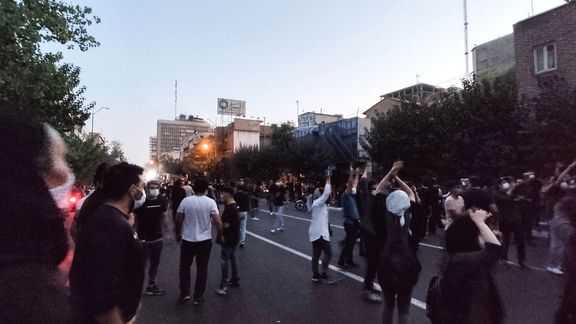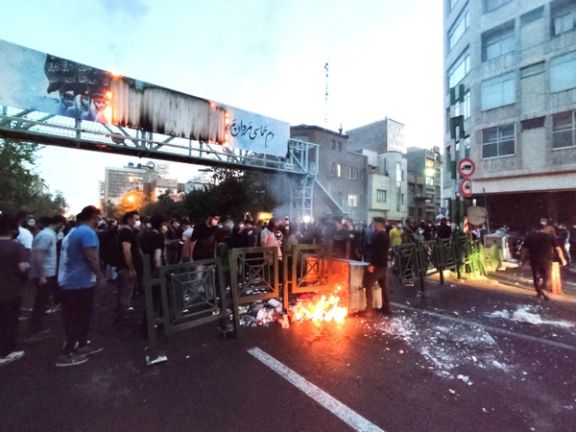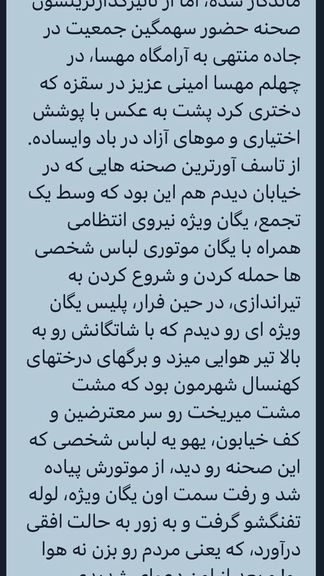Underground Youth Groups In Iran Survive Clampdown, Seek Regime’s Overthrow

An alliance of underground youth groups, formed during last year’s protests in Iran says it has not only endured but also expanded its efforts aimed at toppling the regime.

An alliance of underground youth groups, formed during last year’s protests in Iran says it has not only endured but also expanded its efforts aimed at toppling the regime.
Speaking to Iran International, a representative of the United Youth of Iran (UYI) revealed that despite the government's repressive tactics, including widespread arrests and significant communication challenges, they have successfully broadened their efforts. Extending their outreach, they have gone beyond the alliance's initial scope, to connect with a diverse range of groups that were active during the protests. This includes workers' associations, activists, women's and student groups, as well as civil society organizations.
“This was one of our most important achievements,” the representative who requested anonymity said about UYI.
The alliance of youth groups says it fights alongside other Iranians to free the country from its repressive regime.
UYI was formed when several so-called ‘neighborhood youth groups’ found each other on social media and published a manifesto in early December, less than three months after the death of Mahsa Amini in the custody of morality police sparked several-month-long protests across Iran.
The manifesto circulated on social media said it was meant to “pave the grounds for dialogue and cooperation” among various trade organizations, unions, political groups and activists inside Iran and abroad. It has been revised several times since then.

The document said getting rid of the Islamic Republic, separation of religion and state, and the “formation of an inclusive, democratic government” formed the cornerstone of the manifesto.
“Obviously, the regime makes every effort to identify and arrest members of youth groups and clamps down on these groups to prevent them from growing. They also use tactics such as spreading rumors about our connection with dubious political groups,” the representative of UYI told Iran International.
According to her, youth groups from twenty-three cities out of the thirty-five that initially joined the alliance have persevered and remain actively engaged on the ground, consistently prepared for protests. Meanwhile, some have been forced to operate covertly due to security concerns, while others have been compromised following the arrest of their members.
“We contact each other through safe online applications such as Session and Signal but many underground activists are very weary of any contact. Some of them also have difficulty accessing the internet,” one of the leaders of the alliance who also requested anonymity told Iran International.
“The Revolutionary Guard has gained access to social media accounts of some of the original neighborhood youth groups and is controlling their accounts,” he said.
“Last year, even before Mahsa was killed, you could easily feel people’s anger on the streets, the anger coming from loss of hope in the improvement of their lives, … There was an air of darkness and misery,” Behzad, a twenty-one-year-old student of philosophy from Karaj and a member of UYI told Iran International.
According to Behzad and several other members of youth groups, Mahsa’s death sparked the protests, but it was not only vengeance that drove them to the streets to protest. People were fed up with the regime and wanted it gone, they said.
“The Islamic Republic has been dead for a long time. It has lost its legitimacy amongst the people. I’m certain that its annihilation is going to be expedited by the constant attrition among its loyal forces … People will return to the streets again, when the time comes, because we really don’t have anything to lose,” Behzad said.

“Mahsa’s killing, another example of the clerical regime’s suppression, increased people’s anger to the extent that it became explosive,” Haleh, 29, who studies arts in Esfahan (Isfahan) said.
"I joined protesters on the streets for the first time in January 2017 when the recent protest movement emerged. It was at that moment that protests in Iran transformed into a revolutionary movement due to the economic and political despair among the people," she added.
Sina, a 25-year-old studying for a master's degree in accounting in Tehran, expressed that the only conceivable future for himself and individuals in a similar situation is emigration or a transformation in the country's governance, as the current circumstances are unsustainable.
“There was this shared pain, the pain that most of the population felt … The drop in the election turnout [in 2020 and 2021] was indicative of the loss of hope in any improvement through the ballot box,” Sina said.
Arezou (27) from Nowshahr in northern Iran who holds a degree in literature also said the future looked dark and miserable to her before last year’s protests. “My country would still be sitting on the verge of an abyss even if I found a way to a bright future for myself … From economy to the environment, from politics to the society’s ethics, everything was quickly falling into decay.”
Last year’s protests spread to many large and small cities across the country, and even to some very conservative towns and villages, despite heavy-handed government crackdowns and recurring internet blackouts but gradually subsided by early 2023, when the regime took even a harsher approach and hanged two young protesters, Mohsen Shekari and Majidreza Rahnavard, in public and five others in the following months.
Around 500 were killed by security forces, tens of thousands of protesters were arrested, thousands were wounded, and hundreds lost their eyes to pellets fired directly at them by security forces during the Mahsa protests.